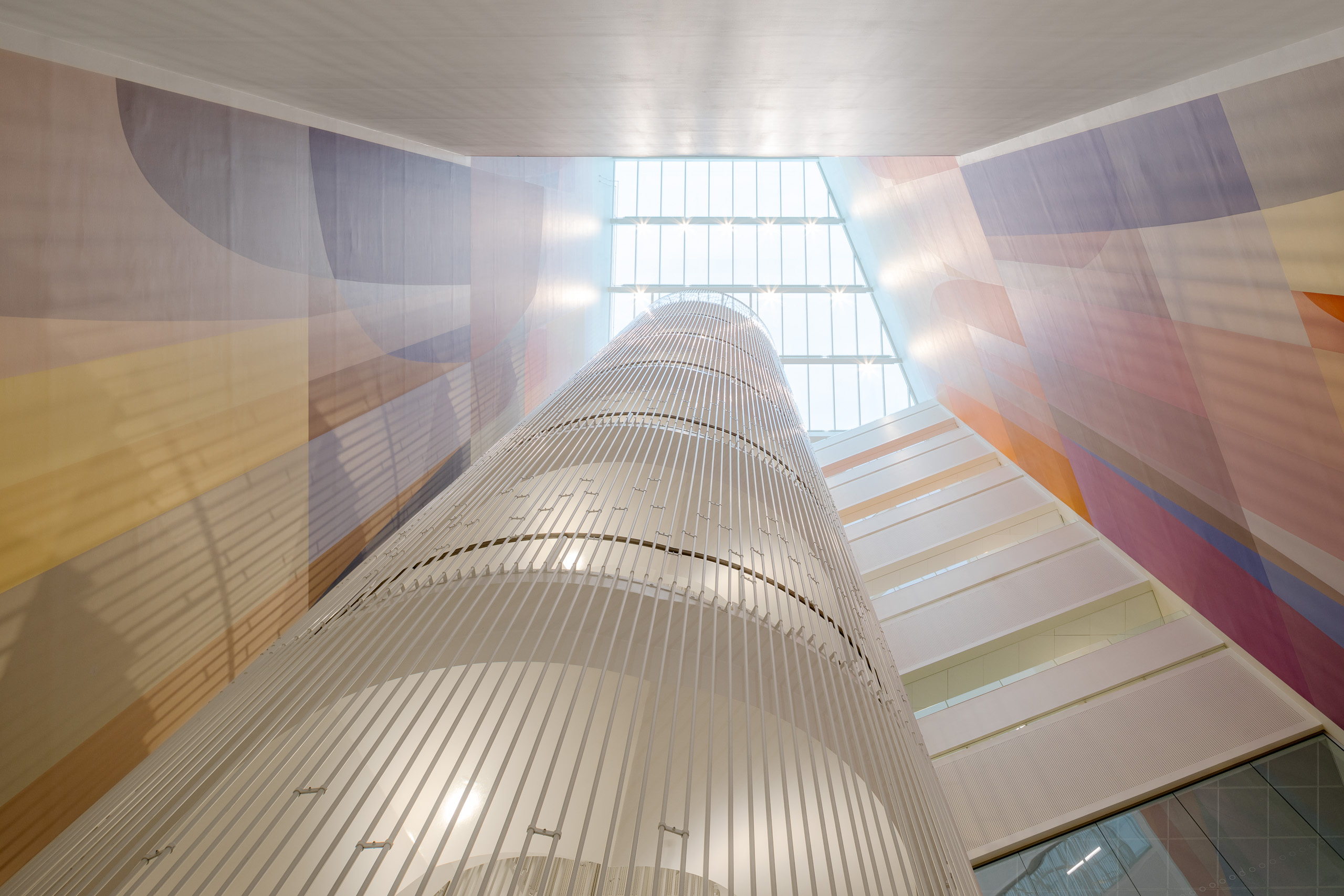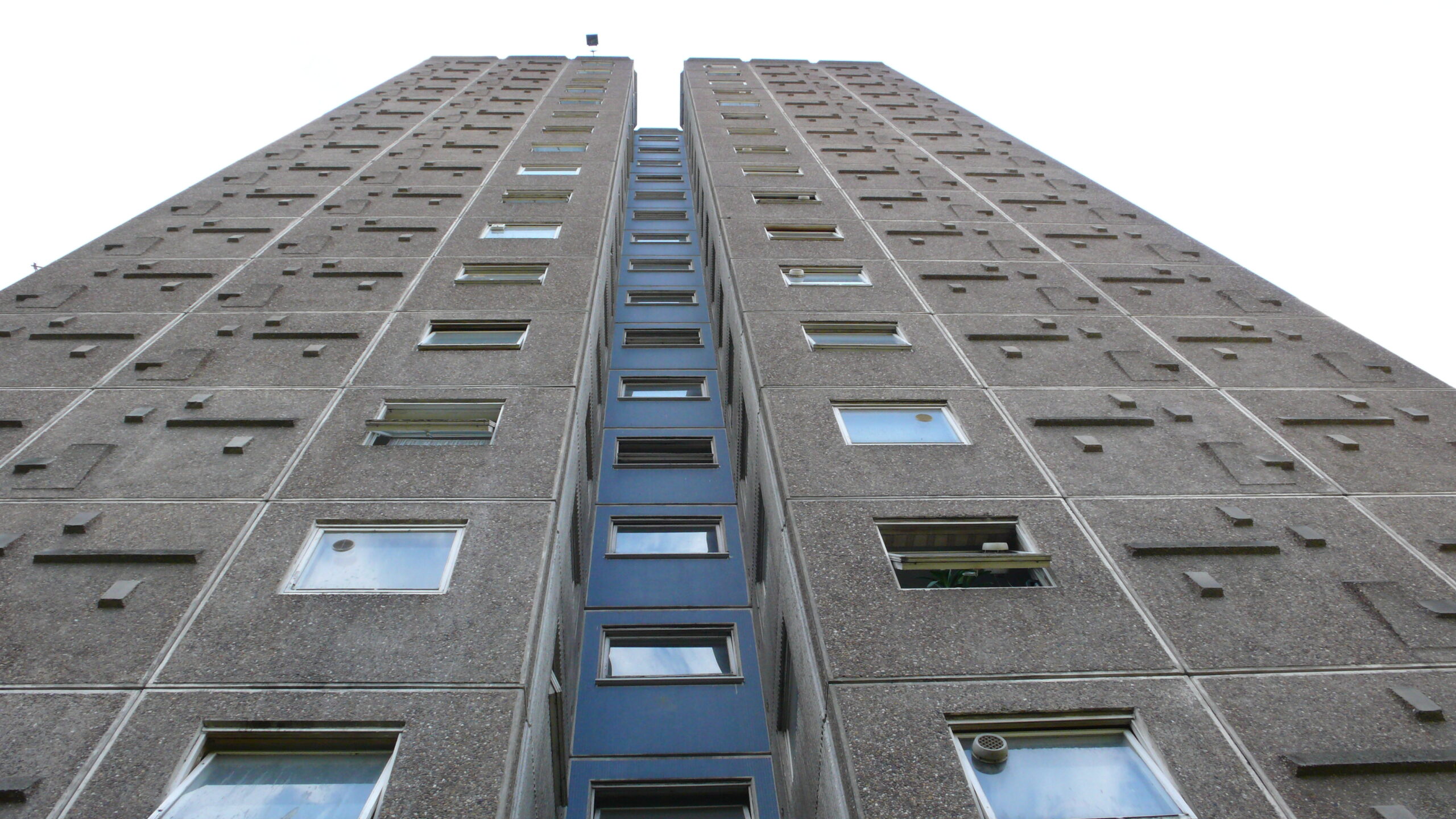Last chance: The 14th Architizer A+Awards celebrates architecture's new era of craft. Apply for publication online and in print by submitting your projects before the Final Entry Deadline on January 30th!
The human urge to forge a meaningful connection with nature is one that has endured millennia. Throughout history, our ancestors sought to intertwine the built and organic spheres — the natural world was at the heart of the ancient Roman villa and the Arabic courtyard house. But as the climate crisis looms ever more potently over the construction industry, biophilic design is experiencing something of a Renaissance.
Fusing organic elements and processes into architectural practice can result in soothing spaces that elevate physical and mental well-being, but it can also support the delivery of climate-resilient buildings. Biophilic design is a toolkit that can help reduce carbon emissions, as well as proposing natural solutions for improving air quality, regulating ventilation, temperature and noise and managing stormwater. And architects are demonstrating increasingly innovative ways of channeling the wisdom of nature into cutting-edge schemes.
These seven winning projects from the 11th A+Awards masterfully combine form and foliage in surprising and unexpected ways. Discover how living organisms are inspiring an exciting new blueprint for future development — this is biophilia 2.0.
Thavi Cosmetic Showroom
By SAVA Architects, Vinh, Vietnam
Popular Choice Winner, 11th Annual A+Awards, Unbuilt Commercial

 This daring concept design seeks to transform a dark, mold-ridden retail building in Vinh into an extraordinary well-being spa where nature takes center stage. The ambitious plan will see modular fiber-reinforced concrete planters adorn the façade, creating a striking, dynamic skin. Overflowing with greenery, the structure will be reborn as a living, breathing ecosystem in the midst of the city.
This daring concept design seeks to transform a dark, mold-ridden retail building in Vinh into an extraordinary well-being spa where nature takes center stage. The ambitious plan will see modular fiber-reinforced concrete planters adorn the façade, creating a striking, dynamic skin. Overflowing with greenery, the structure will be reborn as a living, breathing ecosystem in the midst of the city.
Contemporary iterations of tropical architecture are found throughout the design. A verdant atrium will be the flourishing core of the renovated scheme, capped with a skylight that dapples the treatment spaces with natural light. Within this peaceful green oasis, the hubbub of the urban landscape will fade to a distant memory.
1000 Trees Phase 1
By Heatherwick Studio, Shanghai, China
Jury Winner & Popular Choice Winner, 11th Annual A+Awards, Shopping Center

 Envisioned as two forest-capped mountains, this experimental shopping center overlooks Shanghai’s tranquil Huangpu River. Once an industrial site, the new biodiverse development is a stark contrast to the land’s past life. Large planters raised on columns punctuate the staggered complex, like supersized stalks growing from the riverbank. Over 1,000 trees and 250,000 plants are peppered throughout the complex, which houses retail, hospitality and public spaces.
Envisioned as two forest-capped mountains, this experimental shopping center overlooks Shanghai’s tranquil Huangpu River. Once an industrial site, the new biodiverse development is a stark contrast to the land’s past life. Large planters raised on columns punctuate the staggered complex, like supersized stalks growing from the riverbank. Over 1,000 trees and 250,000 plants are peppered throughout the complex, which houses retail, hospitality and public spaces.
The architects skillfully dissected the typology of the monolithic shopping center into a myriad of more intimate social areas. These small platforms of community sit in communion with the river, while the extensive vegetation carves out a cooling microclimate for spatial users.
Fenwick
By Edition Office, Kew, Australia
Jury Winner, 11th Annual A+Awards, Multi Unit Housing – Low Rise (1 – 4 Floors)

 Positioned on a breathtaking plot adjacent to Yarra Bend Park in Victoria, the organic terrain was a shaping force for the design of this innovative nine-unit housing complex. Rather than one vast volume that would dominate the skyline, the development is divided into three visually independent pavilions connected by a shared basement. The structures’ unique orientations give way to unexpected views across the valley, unfurling surprising perspectives for their residents.
Positioned on a breathtaking plot adjacent to Yarra Bend Park in Victoria, the organic terrain was a shaping force for the design of this innovative nine-unit housing complex. Rather than one vast volume that would dominate the skyline, the development is divided into three visually independent pavilions connected by a shared basement. The structures’ unique orientations give way to unexpected views across the valley, unfurling surprising perspectives for their residents.
Each wedge-shaped pavilion is encircled by rugged greenery — there’s a sense that the mature grounds will reclaim the walls in time, just as the elements will patina and soften the exterior copper screens at their will.
Ling Ling
By Sordo Madaleno, Mexico City, Mexico
Jury Winner, 11th Annual A+Awards, Restaurants (S <1000 sq ft)

 Stepping inside this remarkable restaurant, situated on the top floor of a skyscraper in Mexico City, is a truly transformative experience. Far from the crisp, minimalist lines you might anticipate, the interior is an immersive portal to another place and time, evoking the courtyards and terraces of traditional Mexican architecture.
Stepping inside this remarkable restaurant, situated on the top floor of a skyscraper in Mexico City, is a truly transformative experience. Far from the crisp, minimalist lines you might anticipate, the interior is an immersive portal to another place and time, evoking the courtyards and terraces of traditional Mexican architecture.
Whimsical and masterful in equal measure, dining tables are framed by the canopies of sinewy trees, while foliage snakes up the towering, vaulted ceiling. The bar and rear dining area are cocooned beneath a dynamic timber structure, a striking interpretation of a portico, crafted using a complex stereotomy technique. The expansive views across the city are seemingly incongruous with this sequestered organic world, a juxtaposition that only intensifies the wonder.
The Greenary
By Carlo Ratti Associati, Parma, Italy
Jury Winner, 11th Annual A+Awards, Private House (L 4000 – 6000 sq ft)

 This astonishing home in rural northern Italy has nature at its heart — quite literally. The renovated farmhouse was designed around a 32-foot (10-meter) ficus, which bisects the lofty main living area. A vast two-story wall of glass fronts the south-facing volume, allowing plenty of daylight to pour in.
This astonishing home in rural northern Italy has nature at its heart — quite literally. The renovated farmhouse was designed around a 32-foot (10-meter) ficus, which bisects the lofty main living area. A vast two-story wall of glass fronts the south-facing volume, allowing plenty of daylight to pour in.
A symbol of enlightenment, the rituals of day-to-day life unravel around the tree, with six interconnected rooms radiating out from the space. The Ficus is the grounding anchor of the floor plan — it’s visible from each zone, with the mezzanine encircling the highest leafy branches. Here, the rhythms of nature and the domestic sphere collide and find harmony.
Bay Area Research Company
By SkB Architects, San Francisco Bay Area, California
Popular Choice Winner and Jury Winner, 11th Annual A+Awards, Commercial Interiors (>25,000 sq ft)

 Two sprawling warehouses in the San Francisco Bay Area have been given a new lease of life as a biophilic office for a think tank. Material honesty was central to this outstanding adaptive reuse project, with the original steel supports, raw concrete walls and factory windows laid bare in celebration of the structures’ history. Yet inspiration was sought from the natural environment to soften the industrial edges and create a scheme with sensory appeal.
Two sprawling warehouses in the San Francisco Bay Area have been given a new lease of life as a biophilic office for a think tank. Material honesty was central to this outstanding adaptive reuse project, with the original steel supports, raw concrete walls and factory windows laid bare in celebration of the structures’ history. Yet inspiration was sought from the natural environment to soften the industrial edges and create a scheme with sensory appeal.
To that end, a verdant plantscape has been entwined with the work and recreation zones. As well as improving the air quality and elevating the environment, the foliage serves a clever secondary purpose. Suspended in clusters from the ceiling and arranged in dense screens, the greenery acts as an acoustic dampener in collaborative work areas, helping to reduce noise levels across the office.
JR Kumamoto Railway Station Building
By NIKKEN SEKKEI LTD, Kumamoto, Japan
Jury Winner, 11th Annual A+Awards, Transport Interiors

 Railway stations, liminal passing places between two locales, rarely define themselves as a destination in and of themselves. However, this station in Kumamoto is something of an exception. Rejecting the usual typologies, the astounding transport space is a hub of retail and recreation, but its most extraordinary facet lies at its center.
Railway stations, liminal passing places between two locales, rarely define themselves as a destination in and of themselves. However, this station in Kumamoto is something of an exception. Rejecting the usual typologies, the astounding transport space is a hub of retail and recreation, but its most extraordinary facet lies at its center.
Inside, a seven-story glass atrium houses an enchanting indoor garden brimming with native Japanese plants. A waterfall cascades down from the third floor, the meditative rush transporting commuters beyond the humdrum of the nine-to-five. Imbued with a rich, organic landscape, this transitory space has become a captivating inner world in its own right.
Last chance: The 14th Architizer A+Awards celebrates architecture's new era of craft. Apply for publication online and in print by submitting your projects before the Final Entry Deadline on January 30th!



